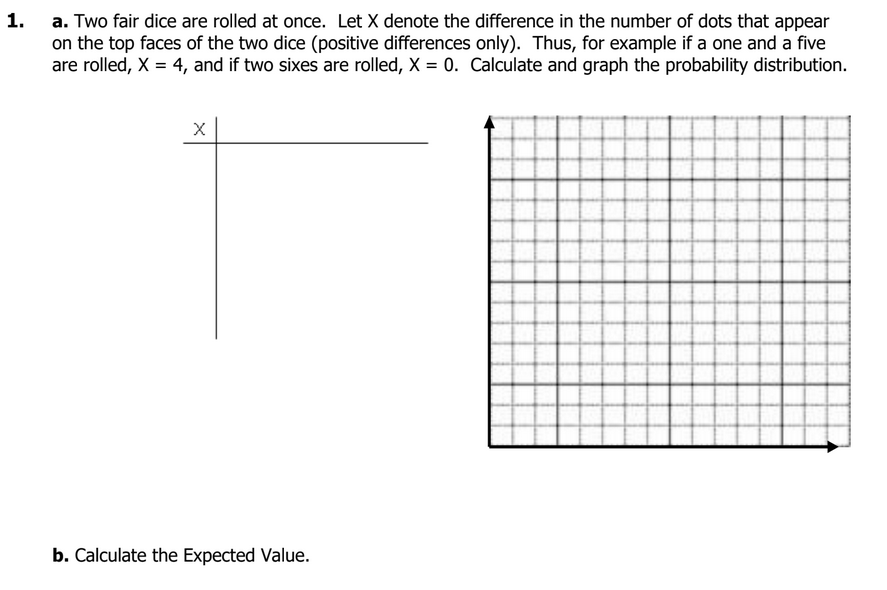1. a. Two fair dice are rolled at once. Let X denote the difference in the number of dots that appear on the top faces of the two dice (positive differences only). Thus, for example if a one and a five are rolled, X = 4, and if two sixes are rolled, X = 0. Calculate and graph the probability distribution. X b. Calculate the Expected Value.
1. a. Two fair dice are rolled at once. Let X denote the difference in the number of dots that appear on the top faces of the two dice (positive differences only). Thus, for example if a one and a five are rolled, X = 4, and if two sixes are rolled, X = 0. Calculate and graph the probability distribution. X b. Calculate the Expected Value.
Chapter8: Sequences, Series,and Probability
Section8.7: Probability
Problem 11ECP: A manufacturer has determined that a machine averages one faulty unit for every 500 it produces....
Related questions
Question

Transcribed Image Text:1. a. Two fair dice are rolled at once. Let X denote the difference in the number of dots that appear
on the top faces of the two dice (positive differences only). Thus, for example if a one and a five
are rolled, X = 4, and if two sixes are rolled, X = 0. Calculate and graph the probability distribution.
X
b. Calculate the Expected Value.
Expert Solution
This question has been solved!
Explore an expertly crafted, step-by-step solution for a thorough understanding of key concepts.
Step by step
Solved in 3 steps with 2 images

Recommended textbooks for you

